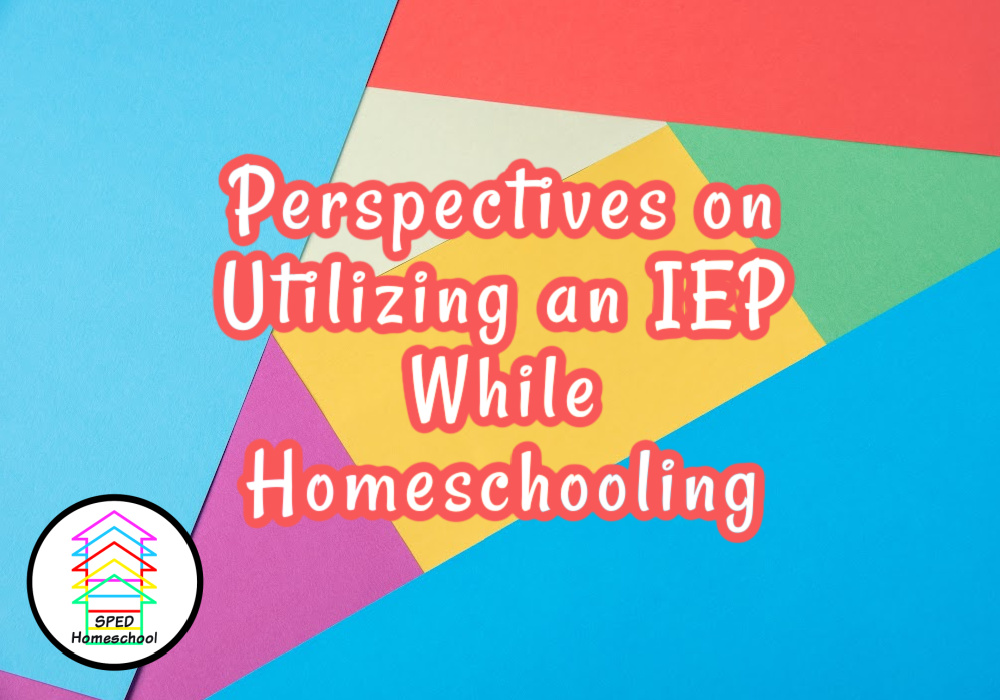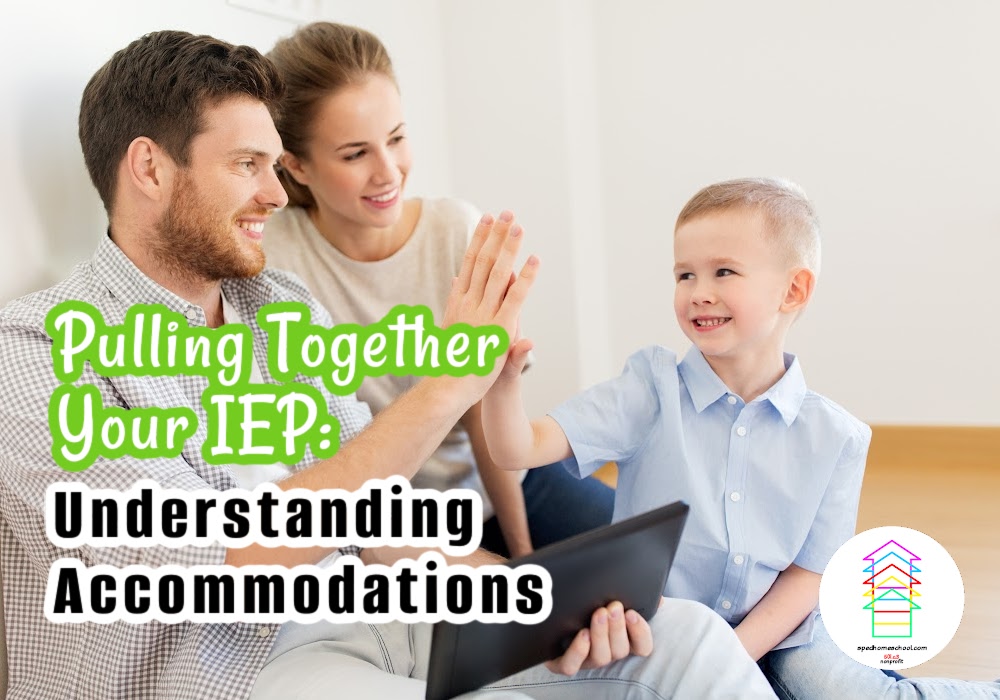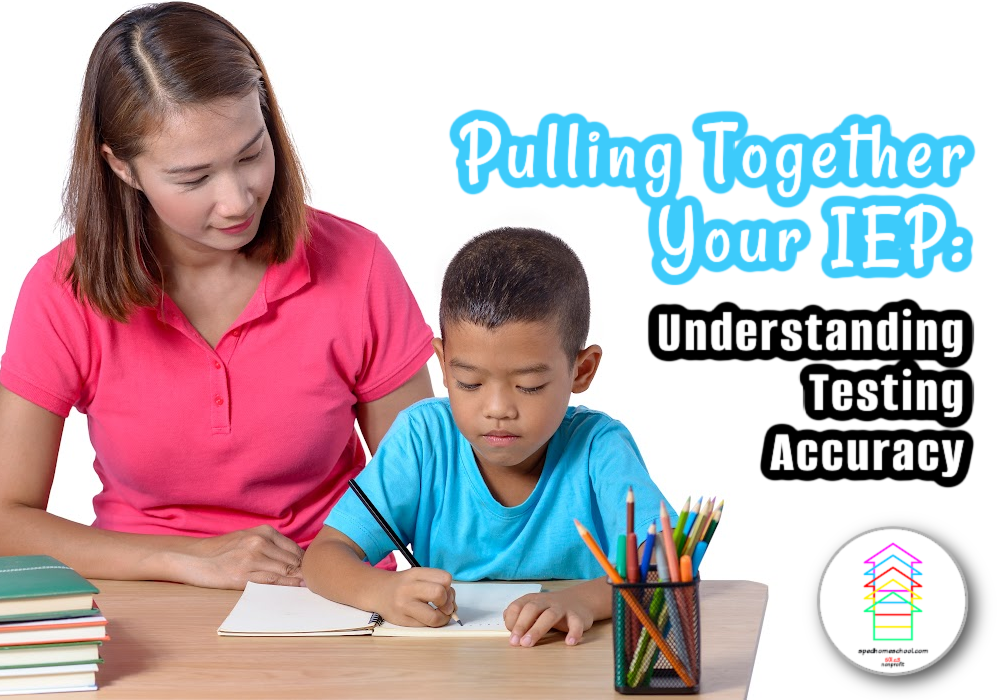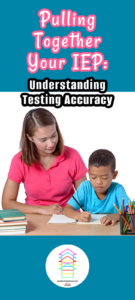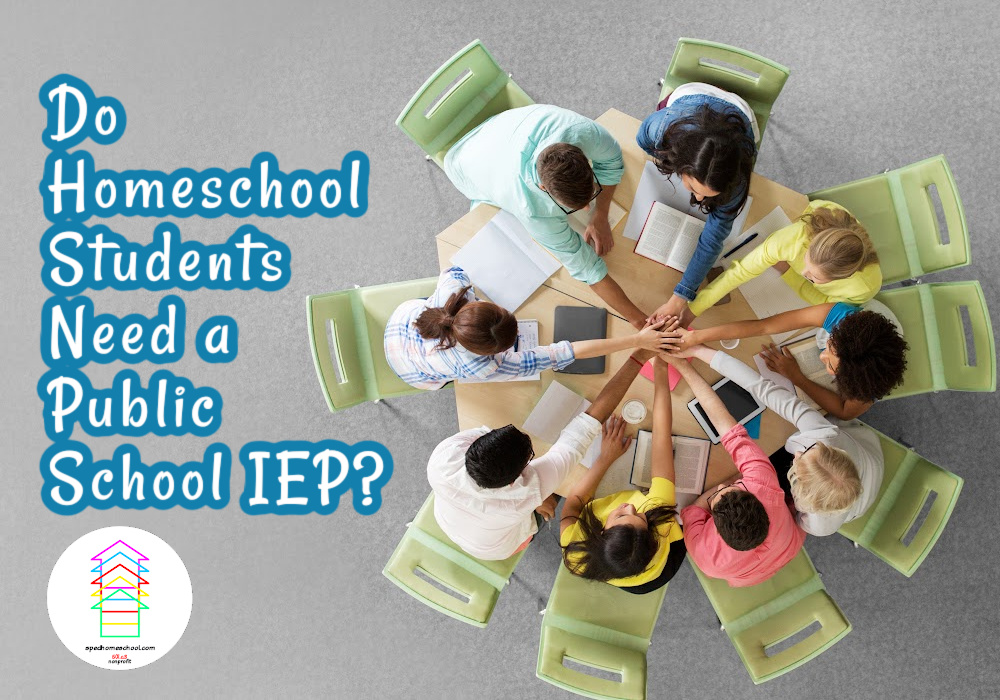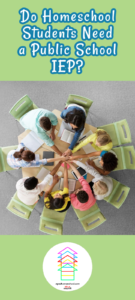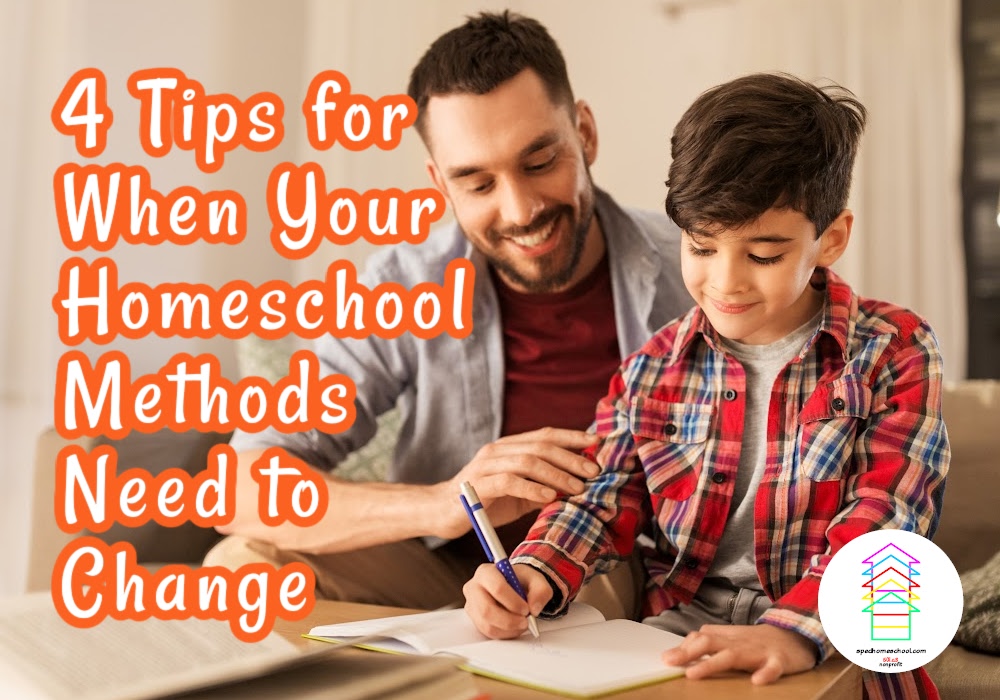by Sarah Collins, MS/ OTR/L from Homeschool OT and Casey Waugh, OTR/L
In early 2017, my eight-year-old was hit directly in the eye with a Frisbee. He could see the Frisbee leave his friend’s hand yet did not know that it was about to give him a swollen, black-and-blue eye. This occurred around the same time that he asked me, “Mom, how do you read when the words are moving on the page?” As an occupational therapist, a specialist working with people to succeed in what they specifically want and need to do, I recognized that he clearly wasn’t able to be successful in his educational or social goals. It was time to seek help.
As homeschoolers, our children’s educations are individual. We can change the pace of study to fit the needs of our family. We have curriculum options that can be purchased or altered to fit needs, and we can adjust the environment for the best time and place to reach our children. However, building a team of people to work with us and our children can also be beneficial. Sometimes we can build a team, which includes doctors and therapists, with a prescription from our pediatrician, and yet when our child’s struggles are specifically affecting educational performance, a public school IEP can be warranted.
1. What is a public school IEP?
An IEP is an individualized education plan. The term IEP refers to the entire process that is used to develop a special education program that helps a student progress and succeed in learning. IEPs are created when students have a disability or a thinking and learning difference that impacts how they perform socially, behaviorally, or functionally in an academic setting. IEPs are created by a team of educators, the parents, and the student when appropriate. In order to receive an IEP, a student must demonstrate one disability identified in IDEA—the federal law that governs special education—and that disability must be found to have an adverse impact on how the child can progress and succeed in their academic curriculum. Not all students who have disabilities receive IEPs, and not all students who receive IEPs have a diagnosis from a medical doctor. If you suspect your child has a thinking and learning difference, your local school district can complete a full educational evaluation to see if a disability is present. School districts are legally required to locate and identify students with disabilities and offer special education if it is needed. How they go about offering that to homeschool families will vary, depending on the state.
For our son, we started this process by contacting the Director of Special Education in our school district. A simple email requesting assistance was the initial contact. After this, we were scheduled for testing within 60 days. He spent three half-days at the school with the psychologist and occupational therapist for standardized reading, comprehension, and motor testing.
2. Why would a homeschooled child need a public school IEP?
You’ve made changes to the schedule. You’ve allowed for all the movement breaks and all the choices. You’ve changed curriculums. You’ve paired motivating subjects with the challenging ones. And, you still are seeing your child struggle to progress. What do you do? If your child continues to have a hard time with learning, keeping pace, or making progress through a curriculum, an IEP might be helpful. Through a thorough educational evaluation, a psychologist uses different types of tests that can determine whether there is an underlying reason, such as a specific learning disability or a processing concern, for your child’s struggles. Educational evaluations not only determine if a student is eligible for special education, but also provide recommendations for next steps and testing accommodations. Evaluations can involve other professionals, such as occupational therapists, as well. Sometimes related services: occupational, physical, or speech language pathology therapies are identified as part of the special education plan. If a district has evaluated your child and determined that an IEP is appropriate, the evaluators ultimately decide where your child must be to receive those services. If they recommend therapy services, they may have the therapist come to your house. Another option might be to go to the public school building for therapy sessions. If an IEP is developed and related services are identified as a need, the services must legally be made available, but they don’t have to be provided in your home. You have a choice on the location where services are provided.
The diagnosis written on our son’s IEP was “reading delay, unspecified”. On a basic level, this meant that he was having difficulties and was behind the norms of his peers, although no specific reason was identified. The school outlined the need for testing accommodations, offered the option to dual enroll (homeschool while using public school services) for the Wilson Reading System instruction, and recommended OT one time per month. For us, the testing accommodations—a person reading standardized test questions to him—was the most important part. In order to receive accommodations for college entry exams, like the SAT or ACT, proof of the need for accommodations is required. Going through this process allowed us to document his need as early as second grade.
3. If a homeschooled child has a public school IEP, what is the school’s responsibility?
Due to the federal law No Child Left Behind, school districts are required to have procedures in place to evaluate and identify children with disabilities and to develop IEPs for those who need them. This includes children who are homeschooled. However, each state has its own homeschool laws and the district/state may say that the child must attend a public school to receive the special education it lays out in the IEP. Some states consider homeschooling a “private school,” which also determines what type of support plan the district is required to put into place for a child. State requirements for homeschooling a child with a disability can be strict and require the educational plan be submitted and reviewed by a special education evaluator, or they can have no guidelines at all.
In our son’s case, we declined the other opportunities because: The Wilson reading program is an Orton-Gillingham approach to reading that we felt we could provide with All About Spelling and All About Reading. This decision was based on my expertise in my child.
Many other families have chosen the Wilson reading program within the school system and thrived. In addition, now that we had the standardized test results and being an occupational therapist as well as his mother, I was able to use the results to develop a program for his motor skills within my home and to build his own personal outside team, a vision therapist and hockey coach. Again, this was based on my expertise in my child and on his desired occupations.
4. If a homeschooled child has a public school IEP, what is the parents’ responsibility?
Parents are an essential part of the IEP team. While parents of children in public schools are involved in the planning and communication that goes on with developing a solid IEP for their child, homeschooling parents have an even greater role in that you get to see the impact, monitor progress, and make adjustments yourself as you educate your child. Accommodations and modifications, like breaks, technology, order of topics, setting, and environment, can all be adjusted to meet your child’s needs without having to go through the school. Depending on your state, there may be requirements about what information you need to track and record throughout the year and what assessments to complete by the end of the school year. An IEP is reviewed every year at an IEP meeting; however, this isn’t the only time you can ask questions or communicate with the school district. Most IEPs will designate one person from the district to be the case manager or your go-to person when you have questions or when anything needs to be changed. If you don’t know who that person is, ask. Leading up to the IEP meeting, it is helpful to make sure your personal data is organized including any outside information you have from doctors or therapists. It is also helpful to write up a list of your major concerns ahead of any meeting with the school district to ensure all concerns are addressed and not forgotten when the meeting starts rolling.
Since our son’s initial assessment provided a diagnosis and recommendations, Pennsylvania law now requires that we utilize a homeschool evaluator with a special education background. She reviews our goals each year and provides a written assessment that they are addressed throughout our education. Many other states do not require this step; however, for us, it has been helpful each year.
5. What should a homeschool parent expect at an IEP meeting?
IEP meetings are opportunities for the entire team to meet together and share their expertise and knowledge to build an education plan for your child. While there is no official length of time a meeting must be, expect at least an hour or so. While every IEP team must include a special education teacher, a general education teacher, a school district representative, someone who can interpret the evaluation results, and any related service providers (OT, PT, and SLP), not everyone will necessarily attend the IEP meeting. In other words, some professionals may provide input to the plan but not actually come to the meeting. You should receive a notice about when the meeting will take place and who to expect to be there. If there is someone on the team that you want to ensure is present, ask for clarity about attendees and send a letter with your request for anyone else. While some school districts may intend to read through the entire document with you present, expect to get a draft IEP ahead of the meeting. If you don’t receive one, again, ask for one! Everyone else on the team has already had access to that document, and if you are going to be an engaged and informed participant, you need to also have that document ahead of time. The draft is just that, a draft. Anything in that draft can be adjusted or rewritten. Having the draft ahead of the meeting, you can use the time at the table to problem solve and really address your major concern areas, not listen to a document being read to you with little input from you as the parent and main educator in your child’s life. If everything isn’t fully resolved at the end of that first meeting, that’s ok! IEPs are not set in stone for a full year. Things can be revised and edited if everyone on the team agrees, which means no one can change it without your permission either. As a parent, you have the right to make requests, ask questions, and ask for the supports your child needs to be successful. While this is not the case across the board, some school districts expect parents to be observers to the process not active problem solvers in the process. Advocating for your child based on your parental expertise is never a bad thing, even if the school district is surprised by it.
As an occupational therapist (OT) and homeschool parent, I have now experienced this from both sides. I’ve been an OT at many of these meetings, but not until I was a parent did I feel pressure and even judgment. A few things that surprised me were the following:
a) A general education teacher that did not know my son still had to be present for the meeting because the law states a teacher must be there. A homeschool educator does not meet that requirement.
b) Special education services with time elements were still recommended, although the educational setting is different. For example, “_________ will receive 45 minutes of direct, explicit decoding and encoding instruction daily” was a written goal on the IEP despite my stating that our lessons at home are shorter because they are one-on-one instruction.
Though homeschools are already individualized, they are not the same as a legal individualized education plan (IEP). Getting testing can provide valuable information for both developing home education plans and receiving services, testing accommodations, and ideas for home goals.
If you need further assistance in your next steps, register for the IEP course with Casey Waugh or contact Sarah Collins for specific ideas to address your child’s needs within the homeschool environment.
Build your own Homeschool IEP with SPED Homeschool’s resources:
To build your own homeschool IEP without involving your public school, use the SPED Homeschool IEP template and guide.
Need help in pulling this document together? Then check out these other resources.
Author Bios:
Sarah Collins, MSOT, OTR/L is an occupational therapist with a background in both pediatrics and home health, and a homeschooling parent. Sarah was first introduced to homeschooling in 2016 while working as an OT in a client’s home; she was amazed at the learning atmosphere and opportunities within the home. Now as an OT homeschooling her own family, she noticed that parents, though experts on their own children, were invariably asking the same questions and needed resources. As a result, Collins Academy Therapy Services aka HomeschoolOT was established with the dual purpose of educating parents on how to create homeschools specifically designed for students’ needs and training occupational therapists to best serve the homeschool community, together guiding children towards their specific purpose in life. You can find Sarah on line at www.homeschoolot.com on Instagram at www.instagram.com/homeschoolOT and in the Facebook group she moderates at www.facebook.com/groups/homeschooltherapyideas.com
Casey Waugh is an occupational therapist from Pittsburgh, PA currently working in an approved private school setting. Casey has worked in a variety of pediatric settings over her ten-year career and specializes in feeding, sensory processing, and prioritizing parent education. Casey also provides individualized supports for parents focusing on supporting their child with sensory differences, as well as navigating the special education process as a Master IEP Coach. You can find her on social media @ottimewithcasey and at www.ottimewithcasey.com
References:
